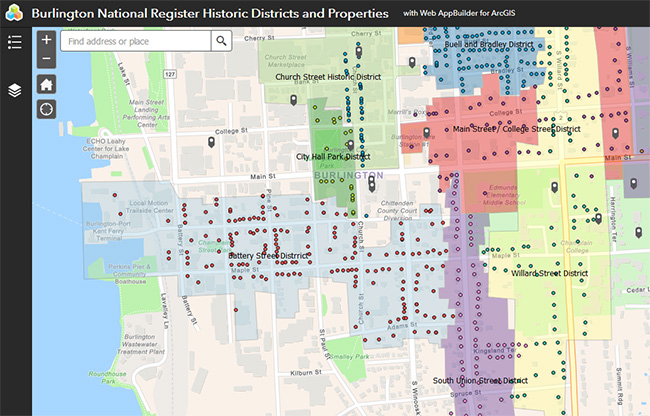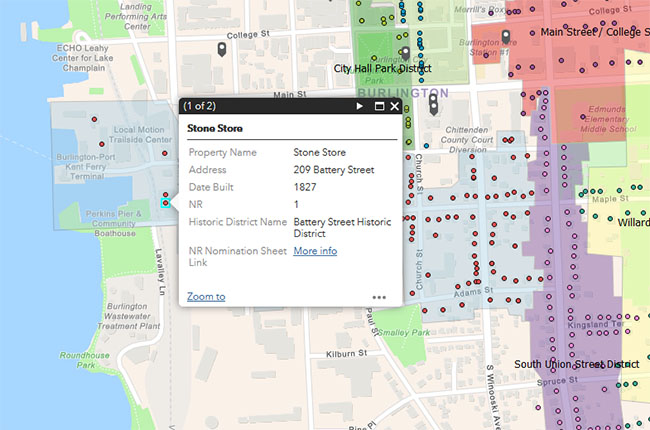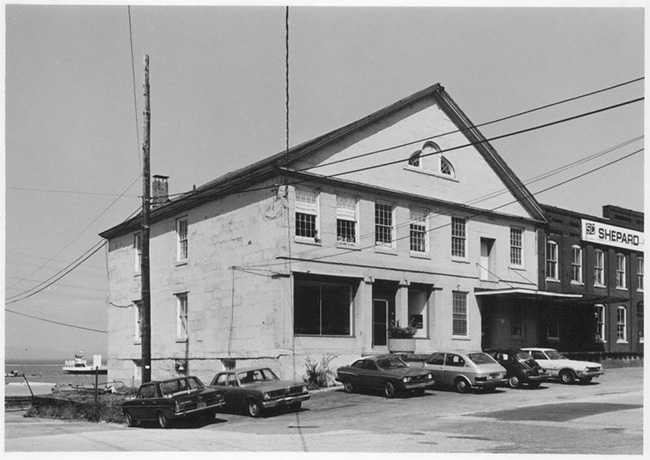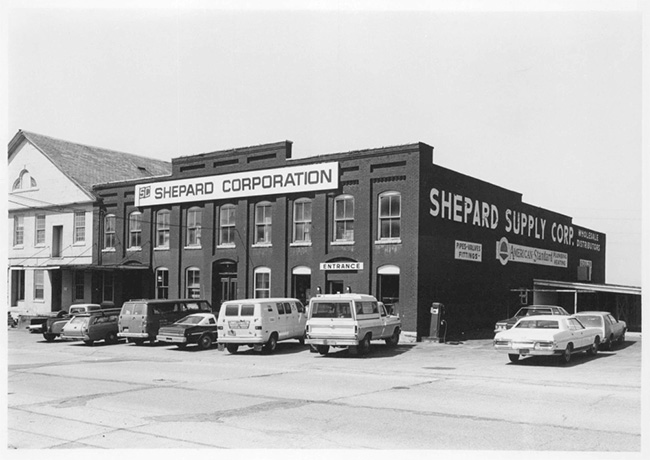Burlington Launches Online Tool For Historic Buildings
The city of Burlington is well known for its historic architecture and walkable neighborhoods. It is no accident that this rich architectural landscape and the integrity of the historic building stock have so successfully endured over time. It has been carefully protected and preserved, and is a strong contributor to the economic health and cultural vitality throughout the city.
A building is officially deemed to be “historic” if it is listed on the National Register of Historic Places or the State of Vermont Register of Historic Places. For a building to qualify, it must meet all 3 of these specific requirements:
- The building must be at least 50 years old
- The building must be associated with significant events or people, maintain distinctive architectural characteristics or elements, or yield information important to prehistory
- The building must possess integrity of design, setting, workmanship, and materials.
So, in other words: it must be old; it must be important; and it must be in good condition.
There are about 50 Burlington buildings and Historic Districts on the National Register (each district containing up to dozens of contributing properties). And over 1,600 buildings in Burlington that have been deemed to possess statewide significance.
When a property owner wishes to make changes or renovations to a building that is listed on the Historic Register, the Burlington Department of Planning and Zoning follows the Secretary of the Interior’s Standards for the Treatment of Historic Properties, a set of guidelines developed by the National Park Service. This does impose a stricter set of standards than what a property owner may be expecting, but a tax credit is available to help offset the cost. A full 20% of the eligible improvement expenses can be claimed against your federal tax liability through the Federal Historic Preservation Tax Incentive, a program that has been encouraging investment in the rehabilitation and re-use of historic buildings since 1976.
One challenge we have had in the city of Burlington is in educating the public, especially at those times when homeowners file for renovation permits. As a long serving member of the Design Advisory Board, I have heard from many property owners who were not aware that their home was even classified as Historic, to say nothing of the restrictions and benefits that go along with that designation.
But it has just gotten a whole lot easier for homeowners to find the information they need about the history of their home.
The city of Burlington just completed a multi-year effort to digitize archived documents on all properties listed on the State and National Registries, and the city has launched an online, interactive map that makes it easy to look up properties and read about their history.
This effort was made possible by a grant from the National Park Service / Department of the Interior. As a volunteer with Burlington’s Historic Preservation Review Committee, I signed the grant application over 2 years ago, and since that time, the Planning and Zoning Department engaged a GIS consultant to complete this work.
The new portal can be found on the city website, at: Departments > Planning & Zoning > Historic Preservation > and clicking on “Is My House Historic?” There are 2 interactive maps available: one showing all the properties on the National Register, and the other map showing all those listed on the State of Vermont Register.

Once you zoom in and identify a property that interests you, simply click it for its name, address, and year built. Click the “more info” link for a PDF copy of the original nomination form, which could include a narrative of the building history, why it qualifies as historic, and archived photos of the property.

I thought I would try out the new portal by looking up the historic information for our own office, located at 209 Battery Street.
Our office is located in the Battery Street Historic District, which was entered into the National Register of Historic Places in 1977 (documented in a letter to then-mayor Gordon Paquette). The office space we’re in today spans 2 different buildings: the southern half of our office occupies the 1st floor of the Stone Store Building, a Greek Revival style building constructed in 1827 and completed in 1841. The building served as a store house for goods unloaded at the old South Wharf or “Salt Dock”, as it was known. (Now named Perkins Pier.) This was the first wharf in Burlington, built in 1810, and is arguably the birthplace of Burlington, enabling the city to thrive as a lumbering port through the 1800’s.
The Stone Store has granite block load-bearing walls and sandstone that was quarried in the Lake Champlain islands and brought to Burlington on a barge. If you’ve been to our office, you probably noticed the interior stone walls and heavy timber framing that give the place such a special character.

The northern half of our office (where you will find our front door and lobby), is located in the Shepard Supply Co. Building, built in 1894. It is a brick structure with 9 bays set between brick piers, with arched windows and a stepped parapet roof. The building was used by wholesale grocers in the neighboring Stone Store, and later by “American Standard Plumbing and Heating”, and “Shepard Supply Corp.” It sits on the site of the Lake House Hotel, which burned to the ground in 1869.

This new tool should be a valuable resource for homeowners, prospective homeowners, realtors, or just about anyone who has an interest in the architectural history of our city.